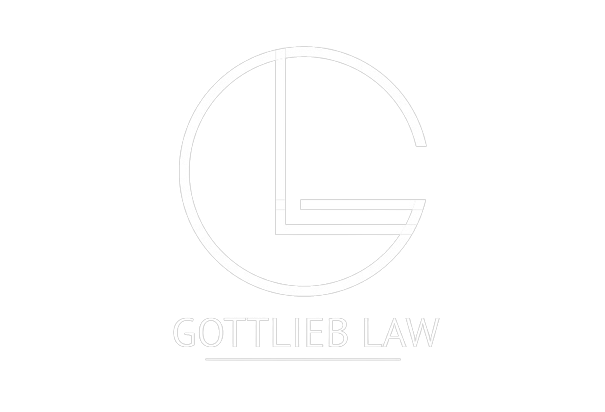Gottlieb Law, PLC provides this article for information purposes only and nothing herein creates an attorney-client relationship. You should not take any actions in reliance on any of the information contained herein without consulting with qualified legal counsel first and reading this article is not a proper substitute for seeking legal advice of your specific situation. Laws change over time and you should seek counsel to discuss any specific legal questions.
Arizona’s real estate market is as competitive as it is complex. Ongoing urban development, property redesigns, and evolving legal precedents have contributed to a rise in boundary disputes between commercial properties. Issues such as unclear property lines, unmapped borders, misplaced fences, under-marked boundaries, and conflicting surveyor reports can lead to significant operational disruptions—and, in many cases, costly legal disputes.
In the eyes of the law, prevention is the most effective strategy. Proactively implementing legal safeguards and addressing potential conflicts early can help prevent minor disagreements from escalating into full-blown litigation.
Here’s what Arizona property owners should understand about boundary disputes, their legal consequences, and the most effective ways to resolve them.
Disagreements About Boundaries
Ambiguous or Unclear Dividing Lines for Land
The division between two neighboring properties or businesses is not always clear-cut. Boundary disputes arise from:
- Conflicting surveys/maps – Historical surveys/maps can often differ or be outdated, which can create confusion.
- Misleading deed boundaries – Ambiguous or incorrect statements in property deeds or recorded documents can cause problems regarding who owns what.
- Mistaken boundaries – parties may have been operating under a different belief as to the true boundaries of the properties at issue.
Property owners may find themselves in lengthy legal fights over land they thought they owned when these discrepancies occur.
Unpermitted Use and Gain of Ownership by Possession
An encroachment occurs when a neighboring landowner uses or builds on another party’s land, such as erecting fences, extending driveways, planting landscaping, or constructing structures beyond the recorded property line. If left unaddressed, encroachments can lead to legal disputes or ownership claims over time.
Arizona law also recognizes adverse possession, which allows a person to claim ownership of land if they have openly, continuously, and exclusively used it without the owner’s permission for over 10 years.
Additionally, under Arizona law, as recognized in Beck v. Neville, property ownership may be established through boundary by acquiescence. This doctrine does not require hostility but instead applies when both property owners have silently accepted a specific boundary as the property line over an extended period—even if it differs from the legally recorded boundary.
Title and Deed Problems
Mistakes on property lines within official records may result in conflicting claims to the same boundary line. Some common issues include:
- Overlapping legal descriptions in adjacent deeds
- Title defects that obscure legitimate ownership
- Discrepancies between recorded boundaries and actual land use
Landowners are often unaware of these issues until after a neighboring property owner makes a claim. At that point, the dispute may require an extensive title search or professional survey to accurately determine the true boundary lines.
Regulatory and Zoning Considerations
Legal descriptions and surveys are not the only sources that can trigger boundary disputes—local zoning laws, easements, and redevelopment plans may also play a role. Arizona municipalities enforce zoning regulations that include specific requirements such as:
- Minimum setback requirements, which dictate how far structures must be from property lines
- Easements, which may limit how land can be used or developed
- Redevelopment plans, which may impact historically understood property boundaries
Longstanding boundary conflicts may surface due to zoning changes, easement enforcement, or redevelopment efforts—potentially affecting property value and commercial operations.
Financial and Operational Impacts
The financial implications of boundary disputes can be significant—and the longer they remain unresolved, the more costly they tend to become. Common examples include:
- Property devaluation – Losing a portion of land can reduce a property’s overall market value and limit future development.
- Business disruption – If commercial property, access is restricted or existing structures require modification, business operations may be delayed or impaired.
Addressing boundary disputes early can help avoid escalating costs and minimize the impact on property value and operations.
Arizona Laws on Boundary Disputes
Boundary by Acquiescence and Adverse Possession
Arizona recognizes the legal doctrine of boundary by acquiescence, which allows a long-accepted boundary between two neighboring properties to become the legal property line—even if a later survey shows otherwise. This typically applies when both property owners have treated a specific boundary as the true line for an extended period, generally ten years or more, without objection.
Similarly, adverse possession allows an individual to acquire ownership of land if they have openly, continuously, and exclusively occupied it without the legal owner’s permission for a period of at least ten years under Arizona law.
The Importance of Surveys and Title Records
Arizona law relies on recorded legal descriptions and surveys to define property boundaries. In boundary disputes, professional land surveys are often the most reliable and persuasive evidence, as they provide legally recognized and objective measurements of property lines.
Implications of Zoning and Land Use
Even if a boundary is altered through legal action—such as a quiet title judgment or a boundary by acquiescence ruling—zoning restrictions and land use regulations still apply. This means that certain structures or uses may remain prohibited on the newly defined property. It is essential to review local zoning codes before initiating or finalizing any legal action involving boundary lines.
Legal Issues and Title Insurance
Title insurance can protect property owners from financial risks tied to boundary disputes. Many policies cover legal expenses and potential losses if a boundary-related claim arises. This makes title insurance a valuable safeguard in both residential and commercial real estate transactions, especially where boundary clarity is critical.
It’s important to consult with the title company to understand exactly what the policy covers, as not all boundary issues may be included under standard terms.
Shifts With Consequences for Boundary Disputes
Technology’s Role in Resolving Disputes
The rise of GPS-based boundary surveys and drone imaging has significantly improved boundary accuracy. These tools provide clear, objective evidence, helping to resolve disputes more efficiently and with greater precision.
Increased Use of Alternative Dispute Resolution (ADR)
Many property owners are turning to mediation or arbitration to settle boundary disputes. ADR allows for resolution through neutral third parties, often resulting in faster, more cost-effective, and legally binding outcomes—without going through the traditional court process.
Geographic and Development Trends in Arizona
Arizona’s rapid urban expansion and rise in mixed-use developments have added complexity to boundary issues. With more properties sharing walls, parking lots, and access roads, the potential for disputes has increased. In this environment, clear boundary definitions and proactive legal planning are more essential than ever.
Resolving Methods for Boundary Disputes
Proactive Steps to Prevent Disputes
Property owners can reduce the risk of boundary conflicts by taking the following steps:
- Conducting a professional land survey before purchasing or developing property
- Reviewing title records and local zoning regulations prior to finalizing any agreements
- Establishing written boundary agreements with neighboring property owners when appropriate
Effective Dispute Resolution Options
- Negotiation – Often the most efficient and cost-effective approach. In many cases, a direct and respectful conversation between neighbors can resolve the issue without legal escalation.
- Mediation or Arbitration – A neutral third party can help facilitate a resolution. Mediation encourages compromise, while arbitration can result in a legally binding decision outside of court.
- Litigation – In complex or high-value disputes, court intervention may be necessary. Success often depends on the strength and clarity of the evidence, including surveys, deeds, and historical property use.
Financial and Legal Precautions
Protecting your property from boundary disputes requires strategic financial planning and proactive legal safeguards. One of the most effective protections is investing in title insurance, which may be able to shield you from claims challenging your property’s boundaries. This coverage acts as a crucial safety net, helping to prevent unexpected legal expenses from draining your resources.
In addition, setting aside dedicated funds for legal fees, filing costs, and professional surveys is a smart way to ensure you can respond quickly and confidently if a dispute arises. A well-prepared budget enables you to engage expert assistance without delay, rather than postponing resolution due to financial constraints.
Most importantly, working with an experienced real estate attorney is essential for assessing potential risks and crafting a strategy for dispute prevention and resolution. A knowledgeable lawyer can (a) conduct detailed property evaluations, (b) review deed and title records, and (c) guide negotiations to prevent minor issues from escalating
Whether your matter involves mediation, arbitration, or litigation, having the right legal counsel ensures your commercial property interests are protected—and that boundary disputes are handled efficiently and effectively.
Preserve Your Interest in Property
Real estate boundary disputes in Arizona can be complex and time-consuming. Understanding legal parameters, taking proactive steps, and using mediation or legal agreements can help avoid major financial losses.
For property owners facing boundary issues, seeking expert legal assistance is crucial. Skilled real estate lawyers can guide negotiations, mediation, or litigation, ensuring that property rights remain protected.
Call Gottlieb Law at 602-899-8188 or use our Contact Us page to schedule an initial consultation with our firm.
Gottlieb Law, PLC provides this article for information purposes only and nothing herein creates an attorney-client relationship. You should not take any actions in reliance on any of the information contained herein without consulting with qualified legal counsel first and reading this article is not a proper substitute for seeking legal advice of your specific situation. Laws change over time and you should seek counsel to discuss any specific legal questions.


